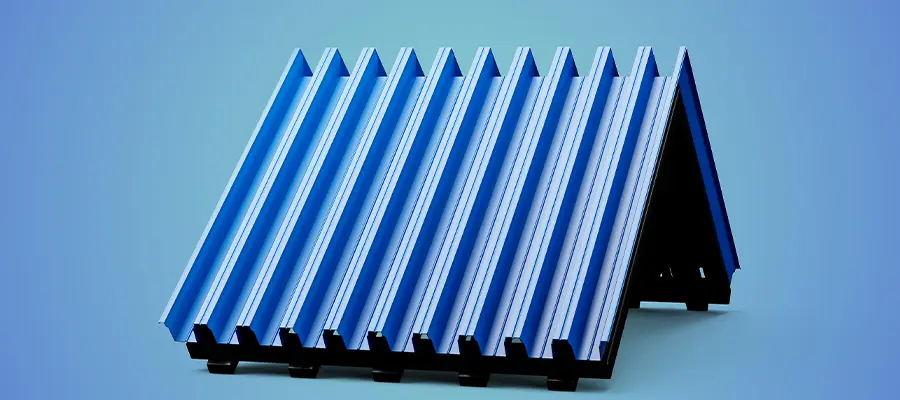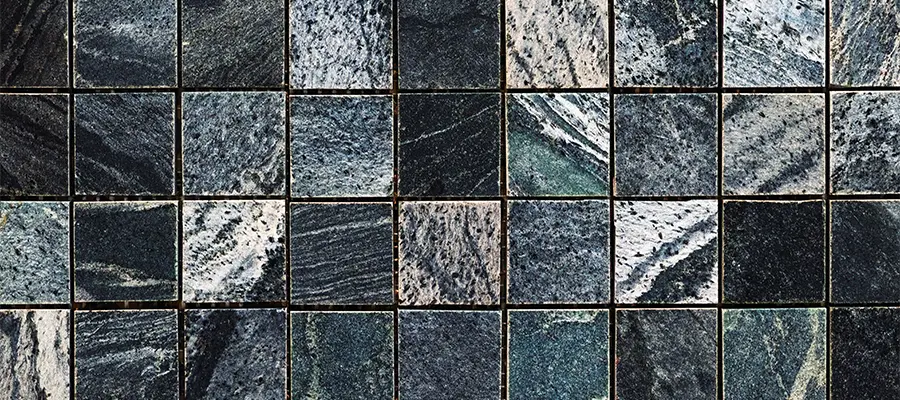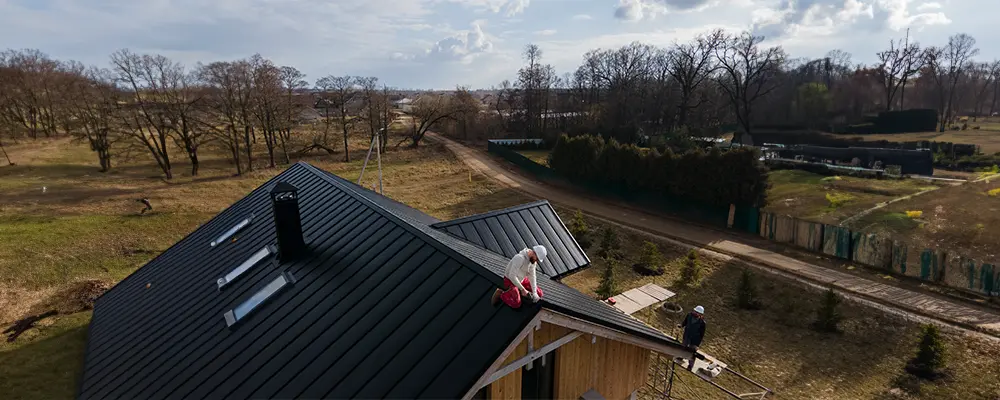Everybody needs security. And home is where we let go of all our worries and yearn to feel safe. That is, the area you depend on, where you lean on its walls like shoulders. Selecting and deciding on a roofing type for your own home is crucial.
A building’s roof is the most important component in terms of structural integrity and other aspects. The component offers the structure stability and a feeling of safety and security. One of the most noticeable and essential components of a building’s architectural beauty is its roof. Paradoxically, it is also an element that could be handled better or minimised throughout design and construction.
Many factors must be considered when choosing the type of roof and the materials used to build it. The house’s environment, architecture, surroundings, and energy efficiency are important variables.
In this blog, Brick & Bolt explains how to understand the different roofing options for your home.
Types of Roofing Materials
Metal Roofing Sheets

Zinc, aluminium, copper, and tin are the most popular metals for metal roofing sheets. Metal roofing systems come in various colours and textures and are frequently used in commercial, residential, and industrial constructions. They can be customised to fit specific roof styles that differ in cost, longevity, energy efficiency, style, and aesthetic value.
Due to their high thermal properties, metal roofing sheets can be used for building garages, backyards, garden sheds, home cladding, and industrial roof coverings. When constructed correctly, metal roofing panels are waterproof and resistant to wind, snow, hail, heavy rain, fire, and hail. Their susceptibility to oxidation or corrosion is their only drawback. The sheets stay exposed at rivets, joints, and welds where the coating is weakened, even when protective films and coatings aid in preventing corrosion. With time and weather, these spots tend to gradually erode the roof’s integrity if they are not further treated to avoid corrosion.
Sustainable Green Roofs
Green roofs, also known as eco-roofs, support and grow vegetation. They can install drainage and irrigation systems and a growing medium like soil covering all or part of them. It is crucial to consider waterproofing and the weight of the soil and vegetation while constructing a new green roof or renovating an old one.
In addition to having strong waterproofing coverings laid over them, green roofs also include root barriers that prevent seepages and fractures and prolong the structure’s life. They additionally make contributions to decrease protection expenses. Even if a home simply uses a portion of its roof as a green roof, it is still an excellent alternative. These roofs significantly improve the house’s visual appeal, are environmentally friendly, provide overhead insulation, and improve the inhabitant’s mental health.
Concrete Roof Tiles
Since concrete is the most often used building material, it makes sense to start with it. When poured, concrete can function as a monolithic component of the structure and integrate seamlessly with other structural elements. The strength of concrete is its main benefit. It also has advantages in terms of fire resistance, water resistance, soundproof quality, smooth finish, and accessibility.
There are currently many different textures and treatments available for concrete. Concrete has constantly been the choice of desire for constructing houses. It provides houses with solidity and security, whether slanted or flat roofs. However, the outside face of concrete roofs needs to be treated with caution. Applying reflective coatings and waterproofing solutions is necessary to guarantee heat control and water tightness.
Terracotta and Clay Roofs
Terracotta roofing tiles have been the material of choice for hundreds of years. The main cause is easy access to clay, the raw ingredient needed to manufacture terracotta. In kilns, clay is moulded and fired to create terracotta. Additives and dyes are added to give the basic clay distinct colours and qualities.
Sealants and protective coatings are also applied to make the porous tiles resistant to heat and moisture. However, in comparison to concrete, terracotta is weaker and requires more upkeep. Security and insect infestation may also be issues if you employ clay or terracotta tiles. To avoid concerns about water leakage and insect infestation, consider installing these tiles over a concrete roof rather than the conventional wooden structure if you decide to use these tiles in your homes.
Photovoltaic Shingles
Solar panels with a tile-like design are called photovoltaic or solar shingles. In addition to serving as a roofing material, solar shingles can generate electricity through solar radiation.
They are a great alternative to other conventional tiles in homes. If the roof substrate is appropriately sloped, installing these stylish tiles is simple. They could take the place of their unappealing solar panels. The output from photovoltaic shingles is marginally lower than that of conventional solar panels.
However, this becomes less of an issue for Indian houses. Considering that the majority of Indian locations see year-round sunshine, this two-in-one roofing solution is an excellent way to save both money and energy. The initial costs are readily regained in the long term, and choosing to roof offers a very reliable solution.
Slate Tiles

Roofing tiles are a high-end alternative for roofing materials, and they are naturally occurring slate. The sleek, sophisticated, and tidy appearance of slate tiles can greatly improve the appearance of your house. Slate tiles add a luxurious appearance to your room while being durable and low maintenance. Additionally, slate tiles come in various hues, including grey, mottled green, purple, blue-black, and others.
On the other hand, if slate tiles are an option for you, there are a few things to consider. Because slate is fairly heavy, be sure your home’s framework is built to withstand the weight. In addition to being one of the priciest roofing materials, slate requires specialised labour, which can take time to come by. And the budget needs to take these extremely significant factors into account.
Architectural or Laminate Tiles
This kind of asphalt shingle roofing is more resilient and long-lasting. Selecting this type of roofing over conventional asphalt shingles can help you overcome the drawbacks of the latter. Two or more layers of asphalt strips that have been crushed and bonded together using fibreglass additives and minerals are known as laminated shingles. Each layer may serve a distinct purpose; for example, the lower layer may strengthen the shingle’s structural integrity, while the higher layer may be more resilient to heat and mildew. In addition to supplying the shingle with the appropriate colours and textures for architectural appeal, the lamination also acts as a protective layer, creating a seal.
Membrane Roofing
Systems for membrane roofing are typically applied as an extra layer on top of another substrate roof surface. They are more commonly referred to as waterproofing membranes because they are usually employed to achieve watertightness.
High-density polyethylene (HDPE), polyvinyl chloride (PVC), neoprene, ethylene propylene diene monomer (EPDM), and other modified bitumens are the most often used types of membranes (also known as pitch roofing membranes). They come in rolls and are carefully arranged as sheets on roofs to reduce seams.
These are mostly utilised as the waterproofing base layer for residential water tanks and swimming pools. However, membranes are also frequently employed in older homes, retrofitting and refurbishing projects, and waterproofing flat-roofed terraces.
Asphalt Roofing Shingles
Although more frequent in the West, asphalt roofing shingles are less common in India. However, they are still utilised in India for particular purposes due to their simple application, inexpensive cost, and resilience under specific circumstances. Since asphalt is a byproduct of petroleum, it is widely accessible. To give it the desired texture and colour, fibreglass and other materials are applied on top after it has been strengthened with additional minerals. The result is a flexible, mat-like substance that can be cut and placed in various forms and patterns.
The main benefits of asphalt roofing are its flexibility and lightweight. These days, modern sheets are also easy to apply because they include an adhesive strip. This roofing material benefits from asphalt’s inherent waterproof properties and long lifespan. However, asphalt’s drawbacks make it less desirable in other situations, particularly in India. They are prone to organic growth, such as fungi and mould, which causes the material to decay. They typically don’t do well in inclement weather and shrink in colder locations. As a homeowner, you should adopt asphalt roofing only after weighing the short-term costs against the long-term drawbacks.
3-Tab Roofing Shingles
These roofing shingles are a subset of the previously mentioned asphalt shingles. In reality, they are one shingle piece with three cutouts that, when installed, resemble three different pieces. They not only give greater space for water to fall evenly, but they also significantly improve the beauty of asphalt roofing designs.
3-Tab roofing shingles offer a consistent appearance and feel and are less expensive than architectural ones. Nevertheless, 3-Tab shingles have shorter warranties and lower dependability than their laminate equivalents. The benefit is that they weigh 50% less than laminate shingles, making them perfect for situations where weight is an issue, such as retrofitting existing sloped roofs.
In India, tab shingles are not commonly utilised due to their drawbacks. Laminate shingles might be a better choice if you are looking to roof a house that you want to live in for the next 30 to 40 years.
Polycarbonate Roofing Sheets
PVC and UPVC are the two most prevalent forms of polycarbonate roofing sheets. Although this type of application is more common in commercial and industrial buildings, PVC roofing material can be useful in some parts of homes and dwellings. Plastic roofing sheets have the main benefit of being available in an extensive range of patterns, hues, textures, and thicknesses. Therefore, sheets with extremely particular qualities to meet the criteria can be obtained based on the application area.
If you’re looking for a clear roofing material that lets light through, polycarbonate sheets are perfect for your home’s patios, decks, sit-outs, and open parking lots. They have a long lifespan, are completely maintenance-free, and are incredibly resilient and weatherproof. Their extreme lightness also contributes little to the structure’s weight. In addition, installing these roofing sheets is simple and requires minimal support from the structure. Their susceptibility to abrasion and scratches is their main drawback, which causes them to become dull eventually. Additionally, they often distort when subjected to excessive heat or undesired stresses.
Plastic Roofing Sheets
Unlike polycarbonate roofing sheets, plastic roofing sheets are not designed to withstand continuous use and abuse. Although short-lasting, they are preferred in transient installations and low-value constructions. Plastic boards fastened over a wooden or metal framework are one type of plastic roofing sheet; others are polythene tarps. The main goals are to shield against rain and direct sunshine. They are not designed to be strong or resistant to weather, wind, etc.
During retrofits, uncovered areas can be covered with plastic roofing sheets, just like in material storage rooms and other similar spaces. They can be installed in a few hours and are incredibly affordable. They also worked on-site to create complicated arrangements in various colours and thicknesses.
Clay Tiles
Clay tiles are yet another environmentally friendly roofing alternative. One may easily find both glazed ceramic tiles and unglazed reddish clay tiles in the market. It works well in warmer climates and is most appropriate for coastal areas.
Clay roofing tiles can have single or double grooves and vary in size and pattern. Consider the woven clay tiles that cover roughly two square feet. Red clay roof tiles typically cost around Rs. 100, but concrete roof tiles might cost as much as half that amount.
Advantages of Good Roofing
Providing Safety and Comfort:
A sealed roof greatly impacts the degree of comfort and living conditions. When reselling, a leak-free roof can increase the house’s value and bring in more money.
Temperature Control Device:
No matter the season, whether it is stormy, sweltering hot, or pouring cats and dogs, a sound roof can control the temperature and keep you safe. To fulfil your needs, refer to the various material variations of roofing tiles available in the market.
An Envelope of Attention:
Your home will garner extra praise and brownie points if its roof speaks volumes about the artistry of its placement! Your home’s exterior will only be noticed and credited if kept tidy.
As a Defense Mechanism
An appropriately constructed roof is more than a barrier against periodic hail or rainstorms. It also acts as a barrier for the building itself. Directing away from the flow of water prevents moisture infiltration and attack on the walls.
Ensuring the Integrity of Structures
A well-positioned and well-kept roof guarantees the building’s overall structural stability. The roof’s stability determines the stability of the house’s complete framework.
You can take into account the following while selecting a roof for your house:
- Durability: How much time the roof will last
- Natural disasters: Is the roof resilient to storms and wildfires?
- Weight: Does the roof weigh too much for the current roof framework?
- Slope: How much slope does the roof have?
- Appearance: Does the roof’s design match the house’s?
Conclusion
The best type of roofing material for your house will rely on your preferences, the climate in your area, and your financial situation.
When selecting a roofing material, keep the following extra variables in mind.
Climate:
The ideal roofing material for your house will depend partly on the local climate. For instance, if you reside in a region that receives a lot of snowfall, you will need a roof that can support the weight of the snow, and if you live in an area with strong winds, you will require a wind-resistant roof.
Budget:
Roofing materials are available at a range of prices. Slate and metal roofs are among the priciest options; asphalt shingles, on the other hand, are among the most reasonably priced.
Individual preferences:
Which roofing material suits your house will also depend on your tastes. Slate tiles are a great option for an elegant and lovely roof. Metal is another option for a long-lasting and energy-efficient roof.
After considering these things, you can narrow your options and choose the roofing material that would work best for your house.

